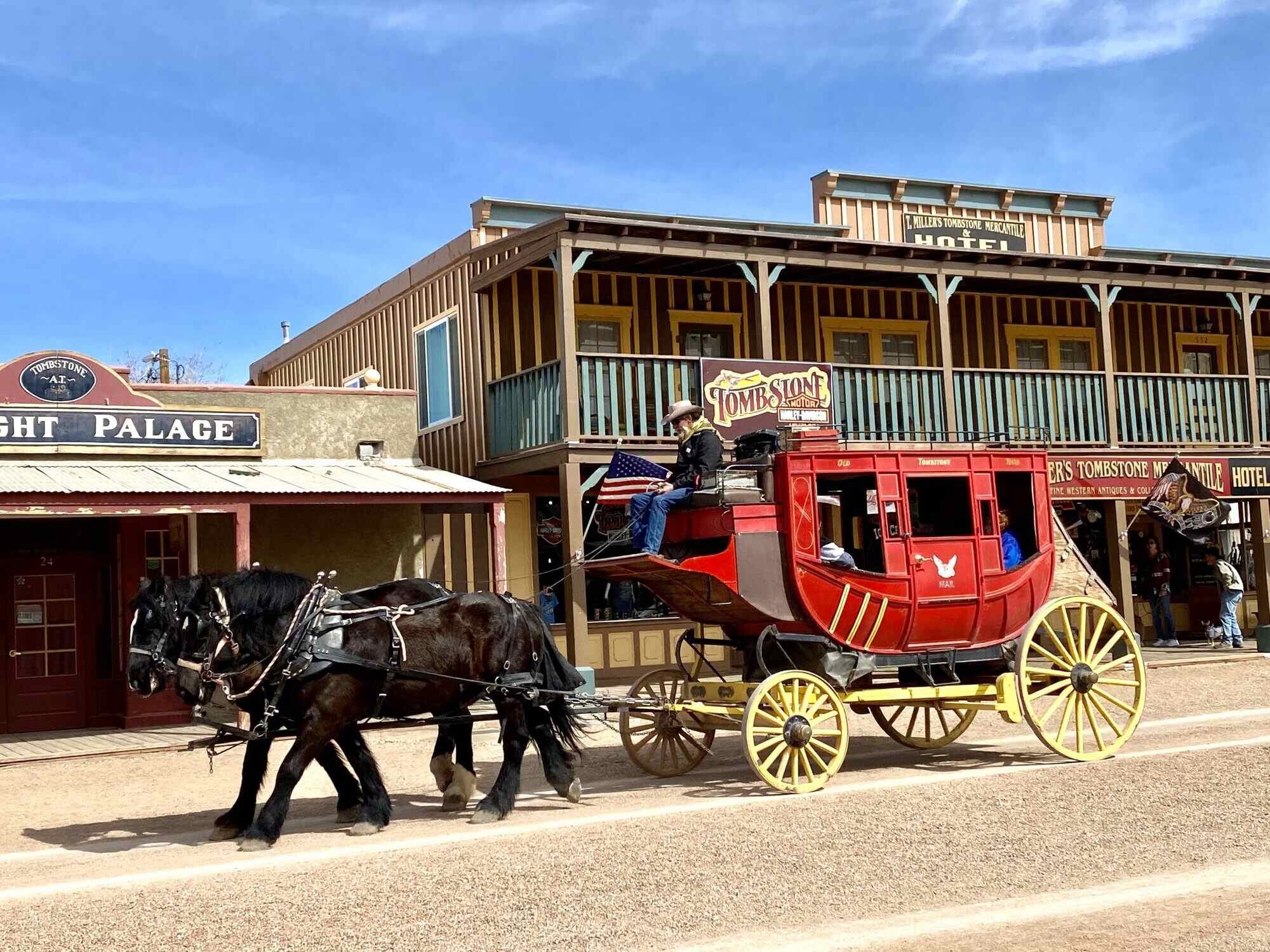Secrets Of Stagecoach Routes In Tombstone Arizona

Tombstone, Arizona, is a place where history comes alive. Known for its Wild West past, this town offers more than just tales of gunfights and gold rushes. One of the most exciting ways to experience Tombstone's rich history is by exploring its stagecoach routes. These routes once carried passengers and mail across the rugged desert landscape, connecting remote towns and settlements. Today, visitors can hop on a replica stagecoach and travel the same paths that pioneers did over a century ago. As the horses clip-clop along dusty streets, you’ll feel transported back in time. The journey offers a unique glimpse into the challenges and adventures faced by those who lived in the Old West. Whether you're a history buff or just looking for a fun family outing, riding a stagecoach in Tombstone is an unforgettable experience. Get ready to step into the past and see the Wild West like never before!
Discovering the Historic Stagecoach Routes
Tombstone, Arizona, is a place where history whispers through dusty streets and echoes in the clatter of stagecoach wheels. This old mining town, famous for its Wild West past, offers a glimpse into the lives of those who traveled its stagecoach routes. Let's explore some of the most intriguing paths that once carried passengers and goods through this legendary town.
1. Allen Street: The Heart of Tombstone
Allen Street is the main thoroughfare in Tombstone, where stagecoaches once rumbled past saloons and shops. Today, it remains a vibrant reminder of the town's bustling past.
- Historic Saloons: Imagine the lively chatter and clinking glasses as stagecoach passengers took a break at the Crystal Palace Saloon.
- Old Courthouse: This imposing building once served as the county courthouse, witnessing many trials and tales from the Wild West.
- Bird Cage Theatre: Known for its raucous entertainment, this theater was a popular stop for travelers seeking a night of fun.
2. Fremont Street: A Path of Legends
Fremont Street, another key route, played a significant role in Tombstone's history. It was here that some of the most famous events unfolded.
- O.K. Corral: The site of the legendary gunfight, this spot is etched in history as a symbol of the lawless Wild West.
- Tombstone Epitaph: The town's oldest newspaper office, where stories of the frontier were printed and shared.
- Boothill Graveyard: A resting place for many who met their end in Tombstone, offering a somber reminder of the town's turbulent past.
3. Toughnut Street: A Road of Resilience
Toughnut Street, with its rugged name, reflects the challenges faced by those who traveled its path. This route was vital for miners and merchants alike.
- Good Enough Mine: Once a bustling silver mine, it attracted fortune seekers from far and wide.
- Tombstone Courthouse State Historic Park: This park preserves the history of the courthouse and offers insights into the town's legal past.
- Schieffelin Hall: Named after Tombstone's founder, this hall hosted community events and gatherings.
4. Charleston Road: Gateway to Adventure
Charleston Road connected Tombstone to nearby settlements and was a lifeline for those seeking new opportunities.
- Charleston Ghost Town: Once a thriving community, now a ghost town, it tells the story of boom and bust in the Wild West.
- San Pedro River: This river provided water and resources for settlers and travelers along the route.
- Fairbank Historic Townsite: A stop for stagecoaches, this townsite offers a glimpse into the lives of those who lived along the route.
5. Gleeson Road: A Journey Through Time
Gleeson Road led travelers to the nearby mining town of Gleeson, where copper and silver were once abundant.
- Gleeson Jail: A relic of the past, this jail housed those who ran afoul of the law in the mining town.
- Gleeson Cemetery: A quiet resting place for those who lived and worked in the area.
- Copper Belle Mine: Once a source of wealth, this mine attracted miners and adventurers seeking their fortunes.
6. Contention Road: A Route of Rivalries
Contention Road was a vital link between Tombstone and the nearby town of Contention City, known for its fierce rivalries.
- Contention City: A bustling town during the mining boom, now a ghost town with stories to tell.
- San Pedro Valley: This valley offered fertile land and resources for settlers and travelers.
- Stagecoach Stations: Along the route, stations provided rest and supplies for weary travelers.
7. Bisbee Road: The Path to Prosperity
Bisbee Road connected Tombstone to the thriving mining town of Bisbee, a hub of activity and commerce.
- Bisbee Mining & Historical Museum: This museum showcases the rich mining history of the area.
- Lavender Pit: A massive open-pit copper mine, a testament to the area's mining heritage.
- Queen Mine Tour: An underground tour offering a glimpse into the life of a miner in the early 1900s.
Discovering Tombstone's Stagecoach Legacy
Tombstone, Arizona, holds a rich history of stagecoach routes that once bustled with activity. These routes were vital for transporting people and goods, shaping the town's development. Exploring these paths offers a glimpse into the past, revealing stories of adventure and challenges faced by travelers. The stagecoach rides available today provide an authentic experience, allowing visitors to feel the excitement of those early journeys. As you travel through Tombstone, imagine the clatter of hooves and the dust rising from the trails. This connection to history enriches the visit, making it more than just a trip but a step back in time. Whether you're a history buff or simply curious, Tombstone's stagecoach legacy is a fascinating chapter worth exploring. Embrace the spirit of the Old West and let the tales of these routes transport you to a bygone era.

